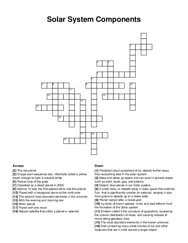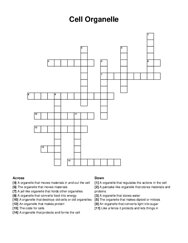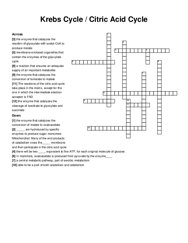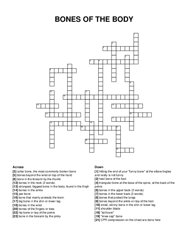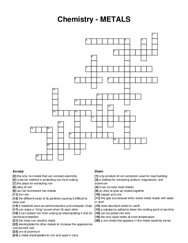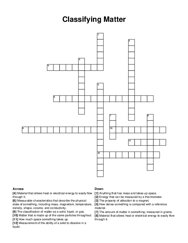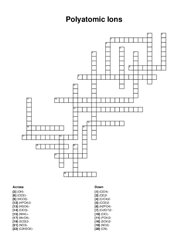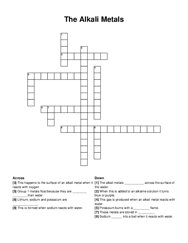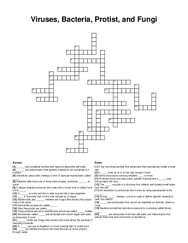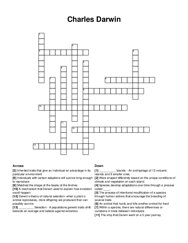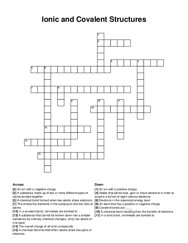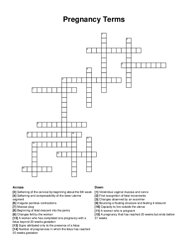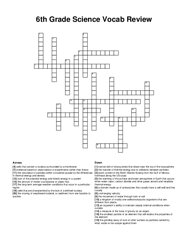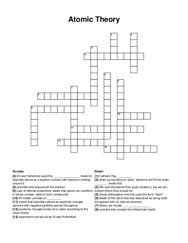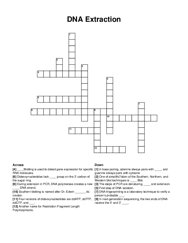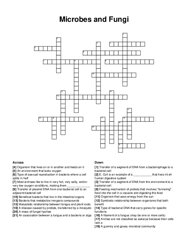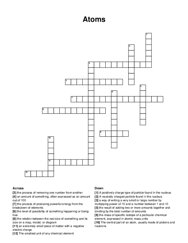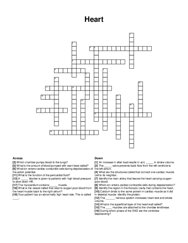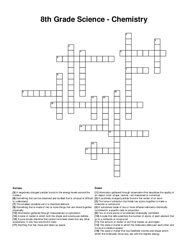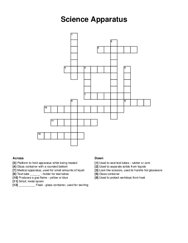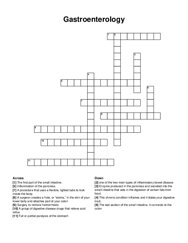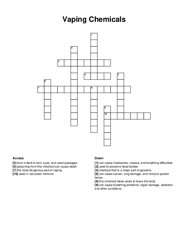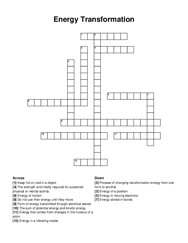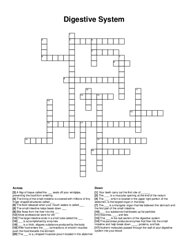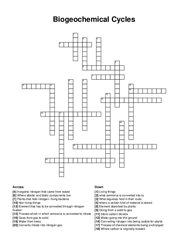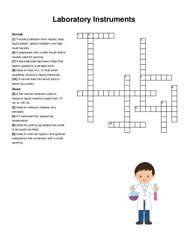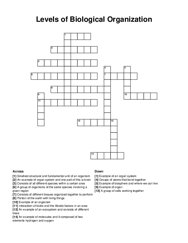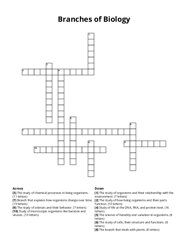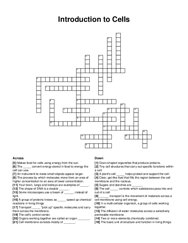Categories
- Agriculture / Farm
- Animals
- Arts / Crafts
- Beauty / Fashion
- Books / Literature
- Business / Finance
- Cities / Places
- Computers / IT
- Ecology / Climate
- Electronics
- Energy / Utilities
- Food / Drinks
- General
- Geography
- Geology
- Health / Fitness
- History
- Home / Garden
- Jobs / Education
- Kids / School
- Law / Government
- Music / Movies / TV
- News / Media
- Occasions
- Christmas
- Easter
- Halloween
- New Year
- Saint Patrick's Day
- Thanksgiving
- Valentine's Day
- Outdoors
- Religion / Belief
- Safety / Prevention
- Science
- Astronomy
- Biology
- Chemistry
- Physics
- Seasonal
- Society / Culture
- Sports
- Tools / Equipment
- Travel / Tourism
- Vehicles
Science Crossword Puzzles
Free printable science crossword puzzles. Download pre-made or create your own Crossword using our crossword maker. Simply download, print and start playing or play online.
icy body of frozen gasses, rocks and dust leftover from the formation of the solar system, minor planet, the most abundant elements in the known …
a organelle that destroys old cells or old organelles, the organelle that makes diploid or mitosis, an organelle that converts light into sugar, the …
there will be two _ , equivalent to five atp, for each original molecule of glucose, the enzyme that catalyzes the conversion of fumarate to malate, a …
"knee cap" bone, strongest, biggest bone in the body, found in the thigh, hitting the end of your "funny bone" at the elbow …
iron ore, ore of aluminum, the place for extracting iron, a barrier method in protecting iron from rusting, can be hammered into sheets, can be pulled …
energy that can be measured by a thermometer, material that allows heat or electrical energy to easily flow through it, matter that is made up of the …
(nh4)+, (no2)-, (no3)-, (so3)2-, (so4)2-, (hso4)-, (oh)-, (cn)-, (po4)3-, (hpo4)2-, (h2po4)-, (co3)2-, (hco3)-, (clo)-, (clo2)-, (clo3)-, (clo4)-, …
this happens to the surface of an alkali metal when it reacts with oxygen, this gas is produced when an alkali metal reacts with water, sodium _ into …
a slipper shaped protozoan that uses cilia to move and to collect food is the _ , unicellular yeast cells undergo a form of asexual reproduction …
a mechanism that darwin used to explain how evolution could happen, matched the shape of the beaks of the finches, an animal that hunts and kills …
a chemical bond resulting from the transfer of electrons, this shows the elements in the compound and the ratio of atoms, in a covalent bond, …
mucous plug, a pregnancy that has reached 20 weeks but ends before 37 weeks, capacity to live outside the uterus, softening of the cervical tip …
the moving of weathered material, or sediment from one location to another, an organism’s ability to maintain steady internal conditions when …
positively charged center of an atom according to the cloud model, scientist who discovered the electron, model of the atom that was described as …
one of simplification of the southern, northern, and western blot techniques is _ blot, during extension in pcr, dna polymerase creates a new _ dna …
type of asexual reproduction in bacteria where a cell splits in half, an association between a fungus and a bacteria or alga, type of bacterial dna …
the process of removing one number from another, the central part of an atom, usually made of protons and neutrons, the mass of specific isotope of a …
the _ nervous system increases heart rate and stroke volume, the _ muscles are attached to the chordae tendineae, what is the amount of blood pumped …
the amount of matter or stuff that makes up and object, the state of matter in which the molecules slide past each other and move at a medium speed, …
produces a gas flame - yellow or blue, used to protect worktops from heat, glass container, platform to hold apparatus while being heated, _ flask - …
this chronic condition inflames and irritates your digestive tract, the first part of the small intestine, a procedure that uses a flexible, lighted …
can cause cancer, lung damage, and immune system failure, this chemical takes years to leave the body, chemical that is a major part of gasoline, …
energy that comes from changes in the nucleus of a atom, do not use their energy until they move, keep hot or cold in a object, energy stored in …
nutrient molecules passed through the wall of your digestive system into your blood, the large intestine ends in a short tube called the _ , the …
all the alleles that make up a certain gene, an allele that is only expressed if there are 2 copies, e.g. bb, the differences within a species, …
where carbon is originally located, non-living things, element that has to be converted through nitrogen fixation, process of chemical elements being …
used to hold, mix, or heat small quantities of solid or liquid chemicals, a flat-bottomed laboratory flask that tapers upward to a straight neck, a …
an example of molecules and it composed of two elements hydrogen and oxygen, consists of different tissues organized together to perform, interaction …
the study of animals and their behavior. (7 letters), the branch that deals with plants. (6 letters), study of microscopic organisms like bacteria and …
in a multi-cellular organism, a group of cells working together, the cell's control center, grain-shaped organelles that produce proteins, some …
